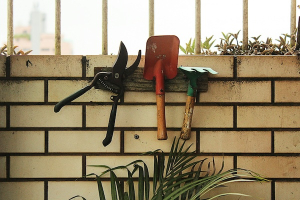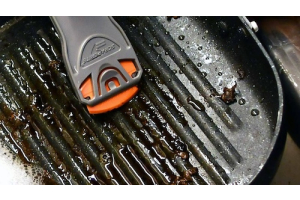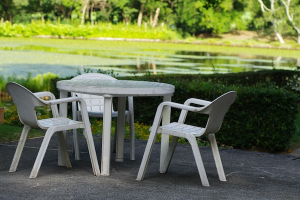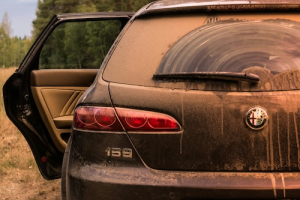Admin Admin
-
August 22, 2025
As the summer sun gives way to cooler days, our homes and outdoor spaces need a little extra care to transition into fall. Leaves pile up, fireplaces come back into use, and outdoor areas need a reset before winter settles in. The good news? With a Scraperite plastic scraper in hand, many of these chores become quicker, safer, and easier.
Clear Leaf Residue from Outdoor Surfaces
Fallen leaves are more than just a yard chore. Left too long on decks, patios, and walkways, they can trap moisture and create stuck-on stains. A plastic scraper makes it simple to lift away leaf film and debris without damaging wood, concrete, or painted finishes.
Fireplace Glass & Hearth Cleanup
When it’s time to cozy up around the fireplace again, you’ll likely find soot or creosote buildup on the glass doors and hearth. A Scraperite blade removes stubborn deposits safely, without scratching delicate glass or tile surfaces, giving you a clear view of the fire.
Window Track & Gutter Prep
Autumn rains and falling
-
July 25, 2025
The wheelbarrow was loaded. Not with mulch or weeds, but with every tool Maddie had used since April.
Hand trowels, pruning shears, a soil knife, even that old cultivator she only brought out for major jobs. All of them were streaked with rust, flecked with dirt, and sticky with a strange sap she couldn't even remember dealing with.
Summer was in full swing, but if her tools didn’t get a little love, they'd barely survive the season.
So instead of buying replacements, Maddie pulled out a scrub brush, a bucket of soapy water, and—most importantly—a plastic scraper.
Start with the Scrape, Not the Soak
Before the soap and water came out, Maddie used a plastic blade to tackle the dried soil and sap. The flat edge popped caked-on dirt right off without scratching the metal, and the flex in the blade made it easy to press around curves and corners without damaging the finish.
Even the wooden handles benefited. With a few gentle scrapes smoothed out hardened dirt that would have just gummed up
-
June 18, 2025
Summer comes with its fair share of outdoor fun and a surprising amount of sticky messes. Whether it’s sap on patio furniture, dried mud on tools, or mystery grime in flower pots, cleanup can get tedious fast. That’s where a durable plastic scraper comes in handy. It’s a lightweight, safe, and surprisingly versatile tool that handles tough messes without damaging surfaces.
Here are some of the best ways to put a plastic scraper to work around the house and garden this summer:
1. Clean Out Flower Pots and Planters
Old roots, hardened dirt, and crusted fertilizer salts can cling to the inside of pots. A plastic scraper lets you clean them out quickly, without scratching ceramic, plastic, or glazed finishes.
2. Remove Dried Mud and Sap from Garden Tools
Trowels, pruners, and spades often come out of the shed caked in last season’s mess. A scraper helps pop off dried debris without dulling blades or damaging handles.
3. Scrub Mildew and Gunk Off Hose Reels and Garden Fixtures
Plastic hose reels,
-
June 17, 2025
The first warm Saturday of the season had finally arrived, and Lauren was ready. She dragged the patio chairs out of the garage, propped up the faded umbrella, and set her sights on a backyard reset. But within minutes, her excitement started to wane.
Everything was... sticky.
There was a syrupy patch on the armrest of one chair that had fused with a dead leaf. Another had what looked like bird droppings mixed with sap. One of the glass tabletops had a weird film across it, probably from sunscreen or spilled drinks last summer. And as she tried peeling an old sticker off a side table, the adhesive turned into a gummy mess.
“This is not how I planned to start the weekend,” she muttered.
But instead of heading back inside or grabbing a metal scraper (which had scratched her furniture last year), she reached for a plastic scraper from her cleaning supplies. It had a flat edge and just enough flex to press into curved surfaces without damaging them.
Now seemed like the perfect time to give
-
May 22, 2025
After three days off-grid in the Adirondacks, Erin’s SUV looked like it had been through a war.
The drive home added its own layer of bug splatter, but that wasn’t the worst of it. Parking under pine trees for shade left sap streaked across the hood and roof. The firepit grates were caked in char, and her camp stove lid had a perfect, fossilized marshmallow from Saturday night’s s’mores.
Erin wasn’t looking forward to the cleanup.
The Problem: Outdoor Mess That Doesn’t Wash Off
She pulled into her driveway, unloaded the gear, and gave everything a once-over. A quick rinse wasn’t going to cut it. The sap was sticky and set. The bugs were baked on. And scrubbing too hard risked scratching paint or ruining the finish on her stove and cooler.
She’d made that mistake before, using a metal scraper on her kayak hull, which left permanent scuffs.
Not this time.
The Fix: A Plastic Scraper in the Camp Kit
Erin reached into her camping bin and pulled out the plastic scraper she’d thrown in “just in
-
May 21, 2025
Whether you're changing your boat’s name, updating registration numbers, or simply giving your vessel a facelift, removing vinyl lettering is a common part of boat maintenance. But it’s not as simple as peeling it off—especially if the adhesive has baked in under years of sun, salt, and weather.
The challenge? Getting rid of old lettering cleanly without scratching your gelcoat, paint, or hull surface. That’s where plastic blades come into play—offering a safer, smarter alternative to razor blades or abrasive scrubbing.
Why Vinyl Lettering Is Tough to Remove
Boat decals are designed to withstand harsh marine conditions, featuring UV-resistant materials and strong adhesives. Over time, however, they can become brittle, cracked, or sun-faded. When it's time to remove them, the backing often flakes off in small pieces, and the glue stays stubbornly behind.
Metal scrapers might seem like a quick fix, but they can gouge fiberglass or leave behind visible scratches—especially on curved or painted
-
May 06, 2025
A clean boat galley isn't just about aesthetics; it's fundamental to a healthy, happy onboard environment and crucial for preserving your boat's interior against the relentless marine elements. The constant motion, often compact workspaces, and sometimes limited airflow can make your galley a prime battleground against grime that seems immune to typical home cleaning methods.
So, what are the usual suspects causing you cleaning headaches? Think cooked-on grease from hearty onboard meals, surprise messes hiding in drawers or cabinets, and those frustrating clogged drains. Each demands consistent attention, the right tools, and a bit of know-how. A fantastic starting point for arming yourself in this ongoing battle is a reliable plastic scraper in your cleaning toolkit.
Conquering Grease Buildup
The saga of grease buildup in a cozy galley is never-ending. Tiny oil droplets inevitably find their way onto walls, cabinets, ceilings, and even vents. Starting with a good degreaser and cleaning
-
April 25, 2025
If your boat stayed in the water all winter, chances are you’re already seeing the first signs of marine growth. Even with anti-fouling paint, algae and barnacle beginnings can creep in as the water warms up. The good news? If you act early, you can clean it off quickly without damaging your hull’s protective coating. The key is using the right technique and the right tool.
Why Early Removal Matters
Once marine growth takes hold, it doesn’t take long for it to multiply. Algae and barnacles not only make your hull look neglected, they also increase drag, reduce fuel efficiency, and can lead to more costly maintenance down the road. Early removal is the simplest way to avoid all that but aggressive scrubbing or using metal tools can cause more harm than good.
How to Safely Remove Early Marine Growth
-
Inspect the Hull
Do a visual scan above and below the waterline. Algae often appears as green or brown slime, while early-stage barnacles look like small, rough bumps. -
Choose Calm Conditions
A
-
-
April 22, 2025
Get your RV or camper road-ready with this targeted checklist. Whether you’re heading to the mountains, coast, or your favorite local campground, these key prep steps will help you start the season fresh, without damaging surfaces or wasting time.
Exterior Cleanup
-
☐ Wash the exterior:
Start with a gentle RV-safe soap to remove surface dirt and winter grime. -
☐ Scrape grime from seals and trim:
Use Scraperite orange blades to gently lift stubborn buildup around window seals, storage compartment edges, and door frames. Safe on rubber and paint. -
☐ Inspect and clean roof seams and vents:
Remove dried sap, mildew, and grime buildup using a plastic blade for tight, curved areas. Check for cracks or gaps needing reseal. -
☐ Remove faded decals (if replacing or upgrading):
Warm the area with a hairdryer or heat gun, then use a Scraperite blade to peel away vinyl without scratching gelcoat or fiberglass. -
☐ Remove adhesive residue:
Apply a safe adhesive remover and gently scrape with your plastic blade
-
-
April 22, 2025
Scraping may seem like a low-risk task, but if you’ve ever slipped and scratched a surface—or worse, yourself—you know it’s worth taking seriously. Whether you're prepping a boat hull, removing caulk from an RV skylight, or cleaning residue off glass, the right tools and precautions can make all the difference.
One of the smartest safety upgrades? Using a plastic scraper instead of a metal one. Plastic blades are already a safer choice, reducing the risk of injury and surface damage without sacrificing effectiveness.
Here’s how to make surface prep safer and smarter from start to finish.
-
Wear the Right Gloves for the Job
Even when using a plastic blade, your hands are doing the heavy lifting. Protect them with gloves that match your task:
-
Chemical-resistant nitrile gloves are great when you're working with caulk removers or adhesive solvents.
-
Padded work gloves help when scraping old finishes or stuck-on gunk from hard surfaces like wood or metal.
-
Thin, dexterous gloves are useful for delicate
-





